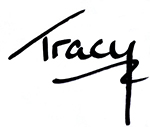
We’ve all been there. You sit down to write, and the words just… don’t. Nothing flows, and before you know it, you’re doom-scrolling or debating whether you really need a third cup of coffee.
What if I told you there’s a way to reach a flow state nearly every time you sit down to write?
This way is the complete opposite to my “Just Start” version of getting yourself writing, and it does chew up time, but there are some interesting pay offs for using this method to get yourself to flow. It’s not magic, but it is a skill you can develop. Let’s break it down.
Why Flow Matters
In the flow state, time disappears. Your ideas pour out effortlessly, characters come to life, and the writing feels organic. You aren’t thinking about writing; you’re just doing it. That’s why it’s crucial to find a way to get there every time—or at least most of the time.
David Farland, in his posts on reaching the writing zone, shared some key points I want to explore and build on.
Warm Up Before Writing (The Pre-Game Ritual)
You wouldn’t expect an athlete to jump into a game without warming up, would you? Writing is no different. Farland emphasizes the need to ease into your fictive world, much like an athlete would prepare for a match. He talks about how jumping into a novel cold for 15 minutes won’t cut it. You need time to get those creative muscles warmed up.
- Writing exercises: Do a little free writing or journal about your characters. You might not use this material, but it helps ease your brain into the right mindset.
- Meditation or visualization: Close your eyes and spend five minutes imagining a scene in vivid detail. How does it feel to be there? What can you smell or hear?
- Read a chapter from a favorite author: Sometimes, reading a great passage can get your own creative juices flowing. Choose something in the style of your current work to set the right tone.
When I first tried this, I thought it was a waste of time. “I should be writing, not scribbling random thoughts!” I told myself. But when I started consistently warming up, something clicked. I’d get to the end of my session and realize I’d written more—and better—than when I tried to power through.
Take Your Time Entering the Zone
Farland also mentions that it can take hours to really get into the zone. That’s right: hours. He talks about writing retreats where his output increased with each day, from eight to thirty pages daily. Most of us can’t afford full-day sessions or multi-week retreats, but there’s still something to learn here.
- Chunk your time: Instead of trying to force writing into tiny slots between meetings or chores, carve out at least a couple of hours. Even an hour is better than twenty minutes.
- Recognize the “warm-up” period: Expect that the first 30 minutes (or even an hour) might be slow. That’s okay! It’s part of the process.
I’ve found that my best writing happens after that initial “grind” stage. Once I’m in, I’m IN. The words start flowing faster, and before I know it, I’m lost in my own world. When I first started, I thought this warm-up was just a slog. But now I know that pushing through it actually saves me time later.
Cut Out Distractions (You Know This, But…)
Yeah, yeah, we’ve all heard this one before. But distractions are flow-state killers, and they come in many forms. Some, like a Twitter notification, are obvious. Others, like the nagging feeling you forgot to buy dog food, are sneaky.
- Turn off notifications: Use tools like Freedom or StayFocusd to block distracting apps and websites.
- Have a pre-writing checklist: Check emails, answer urgent texts, and then commit to your writing time. This helps to keep those lingering thoughts at bay.
I used to be terrible at this. I’d tell myself, “It’s okay to check Discord between paragraphs.” Spoiler alert: it wasn’t. The more distractions I allowed, the harder it became to slip back into the writing zone. Now, I don’t even let myself open social media before a writing session.
When I’ve hit a particularly dry period, and I’m trying to rebuild the writing habit, I go even further. I don’t allow myself to do anything before writing. No emails, nothing on-line, or business-related. Especially with email first thing in the morning, there are too many rabbit-holes that present themselves, and an hour can go by while I’m dealing with it. That’s prime writing time, and the problem I was tackling usually leaves me emotionally wound-up, or stressed, which makes getting into writing even harder.
Exercise and Flow: The Surprising Connection
This is where Farland gets interesting. He compares the writing flow state to that feeling you get when you hit your “second wind” while running. It takes some time, but once you hit it, everything gets easier. The same applies to writing.
Farland suggests that physical exercise can help writers reach the zone. Think about it: when you exercise, you’re building focus, stamina, and mental clarity. All of which are handy when you’re trying to write for hours on end.
- Short bursts of exercise: Do a quick workout or go for a walk before writing. Even ten minutes can help clear your mind.
- Use exercise as a break: When you’re stuck or mentally fatigued, move your body. Sometimes, stepping away for a bit is the quickest way back into the zone.
Personally, I’ve found this invaluable. If I’m stuck, I step away for a quick stretch or even a walk around the block. Nine times out of ten, I come back to the page refreshed and ready to write.
Build Momentum with Writing Streaks
Another key to reaching flow is consistency. Farland talks about how his word count increases with each consecutive day of a writing retreat. The longer he stays immersed in his world, the more productive he becomes.
This speaks to the power of building writing streaks. Each day you write, you’re reinforcing your focus and deepening your connection to the story.
- Write daily if you can: Even if it’s only for 20 minutes, the habit of writing daily keeps you in touch with your story.
- Track your streaks: Use tools like a writing journal or apps like “Streaks” to track your progress.
When I started tracking my writing streaks, I noticed I was getting into the flow faster each day. Even when I didn’t feel like writing, the streak kept me accountable. And after 10–15 minutes of “ugh, this is hard,” I’d usually be swept into the story.
Key Takeaways:
- Warm up: Take time to get into the zone through exercises, meditation, or reading.
- Block out distractions: Create a distraction-free environment to give yourself the best chance at success.
- Move slowly into your writing world: Allow yourself time to dive deep. Don’t rush it.
- Exercise to clear your head: A little movement can make a big difference.
- Write consistently: Build momentum by writing daily (or at least regularly).
Reaching flow takes time and effort, but it’s absolutely possible to do it consistently. It’s not about churning out mediocre work fast. It’s about priming yourself to write well and to enjoy the process.
As David Farland says, “You can’t make a living just writing novels, but you can make a living if you write them well.” The key is finding a way to get into that zone every time.

Write More, Faster Than Ever Before | Are You Prolific?
Editing Your Next Novel? Mark Posey offers fast, writer-friendly edits with zero drama. Check out services »
